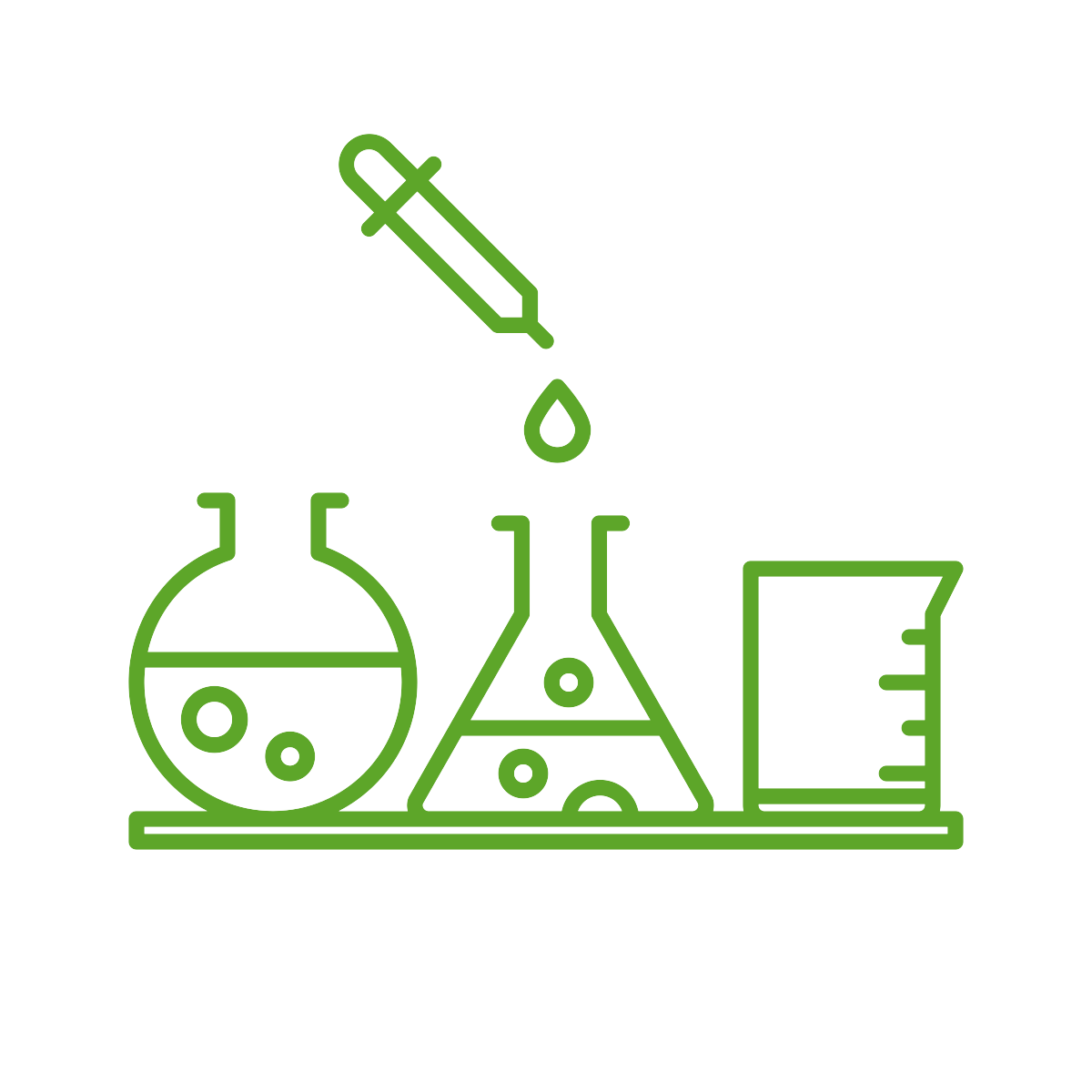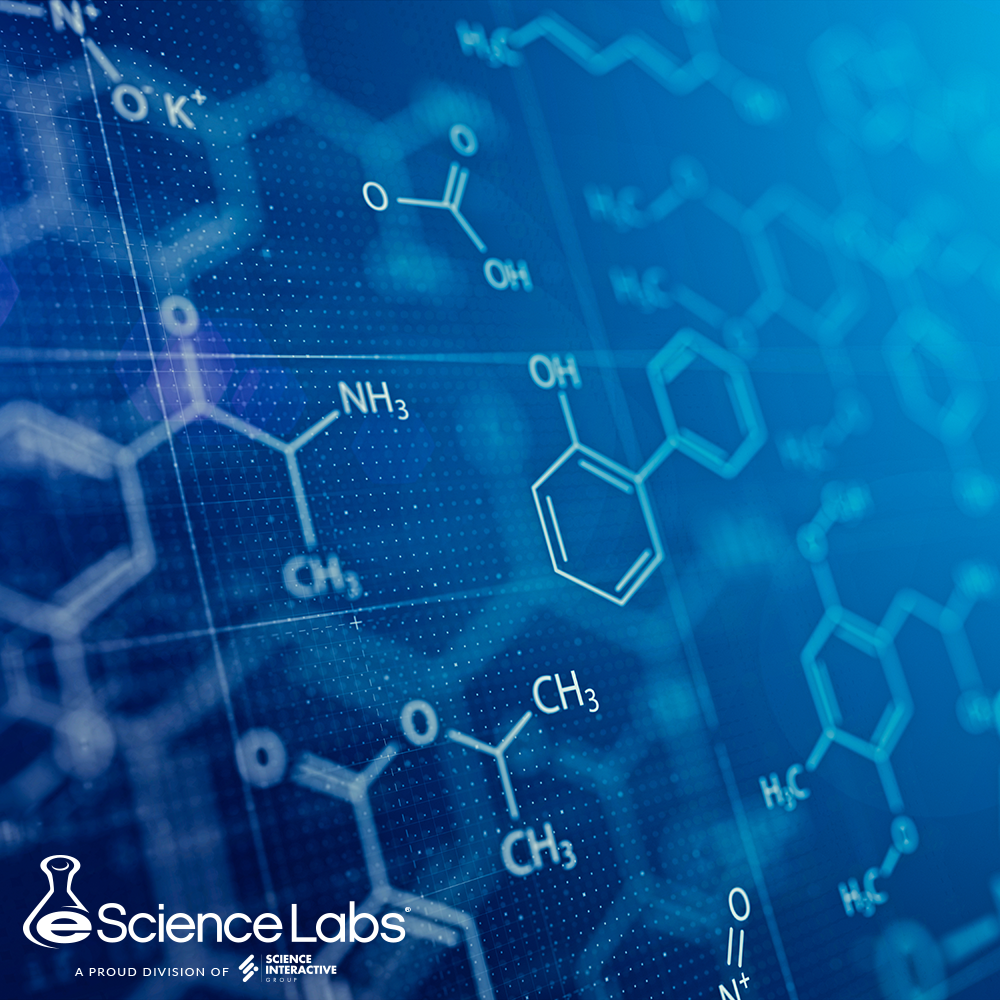eScience Labs: Chemistry Labs
The eScience Labs lab kit, created specifically for college-level Chemistry, includes models, specimens, safety equipment, and more. This kit, combined with Odigia’s Teaching and Learning Tools, is everything you need to engage, collaborate, track, and assess your students.
This course includes:

Digital Learning and Teaching Tools

Quality Lab Kits

Customizable Assessments
The Benefits of eScience Labs + Odigia

Make It Yours
Customize the lab kit and assessments to fit the needs of your course and match your desired learning outcomes.

No-Hassle Delivery
Kits are delivered directly to your students at the time and price you need, giving your students a successful lab experience wherever they are.

Prepare Students
Go beyond the traditional with digital learning and teaching tools that help prepare students for success in today’s workplace.

Boost Engagement
Create an immersive, engaging, and affordable distance learning experience. Can connect to your LMS or run independently.
eScience Labs: Chemistry Labs
Lab Kits Available in Odigia:
Laboratory Safety and Procedures
- Exercise 1: Safety Contract
- Experiment 1: Neutralization of Acids and Bases
Thinking Like a Chemist: The Scientific Method
- Experiment 1: Using the Scientific Method
- Exercise 1: Using the Scientific Method to Write a Lab Report
Data Analysis and Graphing
- Experiment 1: Metric Measurements
- Experiment 2: Density of a Gummy Bear
Types of Matter
- Experiment 1: Classification of Matter
- Experiment 2: Separation of a Mixture of Sand and Salt
Exploring Solubility
- Experiment 1: Kool-Aid® Molarity
- Experiment 2: Slime Time
Examination of Physical and Chemical Properties
- Experiment 1: Density of a Substance
- Experiment 2: Solubility and Reactivity
Measuring Heats of Reactions
- Experiment 1: Determination of Specific Heat of a Metal
- Experiment 2: Determining the Energy in Food
Distinguishing Between Endothermic & Exothermic Reactions
- Experiment 1: Conservation of Heat Energy
- Experiment 2: Cold Pack vs. Hand-Warmers
- Experiment 3: Chemistry of Ice Cream
Electron Configuration
- Experiment 1: The Chemistry of Fireworks
Electromagnetic Radiation
- Experiment 1: Measuring the Wavelength of a Laser
Molecular Geometry: The VSEPR Model
- Experiment 1: Molecular Models of Neutral Molecules
Types of Chemical Bonds
- Experiment 1: Building Models of Ionic and Covalent Bonds using Valence Electrons
- Experiment 2: Correlate the Melting Points of Various Elements with their Bond Type
- Experiment 3: Solubility Characteristics of Chemical Bonds
Molar Mass and Freezing Point Depression
- Experiment 1: Determining Molar Mass from Freezing Point
Evaluating Precipitation Reactions
- Experiment 1: Performing a Precipitation Reaction
Types of Chemical Reactions
- Exercise 1: Types of Chemical Reactions
Oxidation-Reduction Reactions
- Experiment 1: Preparation of Iron (II) Acetate and Iron (III) Acetate
Molar Mass
- Experiment 1: Percent Sugar in Bubble Gum
Periodic Trends in Atomic Properties
- Experiment 1: Construction of a Periodic Table
Stoichiometric Calculations: Reactants and Products
- Experiment 1: Calculating the Yield of Calcium Carbonate
Exploring Reaction Rates
- Experiment 1: Temperature and the Rate of Chemical Reaction
Chemical Kinetics and Catalysis
- Experiment 1: Enzymes in Food
- Experiment 2: Effect of Temperature on Enzyme Activity
Titration Indicators
- Experiment 1: Getting Acquainted with Indicators
Chemical Nomenclature
- Experiment 1: Nomenclature Practice
Compound Formulas
- Experiment 1: Determining the Chemical Formula for Copper Gluconate
Qualitative Analysis of Ions
- Experiment 1: Qualitative Analysis of Reactions
Gas Laws
- Experiment 1: Ideal Gas Law – Finding Percent H 2 O 2
- Experiment 2: Charles’s Law (Part 1)
- Experiment 3: Charles’s Law (Part 2)
Acid- Base Titrations
- Experiment 1: Titrations with Taco Sauce
Molar Volume of Gases
- Experiment 1: Determining Molar Volume
Determining Molar Mass and Vapor Density
- Experiment 1: Calculating the Molar Mass of Ethanol
Nuclear Chemistry
- Experiment 1: Estimating Half-Life
Reaction Rates
- Experiment 1: Calculating Rate of Reaction
Equilibrium Constants
- Experiment 1: Equilibrium Constants
Preparation of Buffer Solutions
- Experiment 1: Preparing a Buffer
- Experiment 2: Preparing a Buffer Solution with Borax
Standardization of a Solution
- Experiment 1: Determining Molarity of NaOH
Separation by Chromatography
- Experiment 1: Paper Chromatography
Chromatography
- Experiment 1: Paper Chromatography of Carotenoids
Electrochemical Series
- Experiment 1: Plating Copper Gluconate
- Experiment 2: Waste Disposal of Copper Gluconate
Electrochemical Cells
- Experiment 1: Electrochemical Cells
Coordination Compounds and Isomers
- Experiment 1: Creating Isomers
Organic Chemical Nomenclature
- Experiment 1: Nomenclature Practice
- Exercise 2: Drawing Organic Molecules
Hydrocarbons
- Experiment 1: Solubility Testing
- Experiment 2: Hydrocarbon Melting Points
Stereochemistry
- Experiment 1: Modeling Chirality
Esters and Alcohols
- Exercise 1: Synthesis of Fragrant Esters
Aspirin Analysis
- Experiment 1: Aspirin Extraction
Saponification
- Experiment 1: Saponification of Vegetable Oil
Antioxidant Analysis
- Experiment 1: Iodometric Titration
The Chemistry of Life
- Experiment 1: Testing for Biomolecules
Isoelectric Point Titration
- Experiment 1: Isoelectric Point Titration of Proline
Protein Isolation
- Experiment 1: Casein Extraction
These labs have been combined with our comprehensive Chemistry content to create a complete digital learning experience for your students.

Science Interactive Group provides comprehensive, standard-aligned content and educational products, services, and software. Our vast assortment of innovative STEM-oriented products is designed to provide instructors with interactive, real-world applications that engage students and enhance outcomes.

Odigia provides digital learning and teaching tools that enhance the way students and instructors access, modify, and engage with content, collaborate with each other during the course, track progress and understanding of content, and ultimately apply knowledge.
Interested in learning more about eScience Labs + Odigia?

